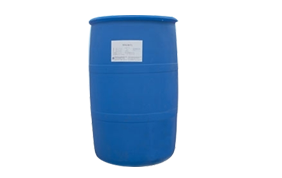Alkyl polyglycosides (APG) is a new type of non-ionic biosurfactant. Its raw materials come from renewable plants, such as corn, coconut oil, palm kernel oil and so on. APG does not contain K + and Na + plasma and can be completely degraded into H2O and CO2 within 7 days. As an environment-friendly surfactant, APG can promote the dissolution and hydrolysis of organic matter in waste, so as to reduce the time of AD process.

Ad method is a very effective method to stabilize waste activated sludge (was) and obtain renewable resources (such as short carbon chain fatty acids and methane). On the one hand, taking effective measures to inhibit the production of methane can accumulate and produce a large number of short chain fatty acids (SCFA). SCFA is a biological nutrient removal and enrichment matrix (BNR) with high performance; On the other hand, it promotes the decomposition of fatty acids in the process of ad in some ways.
Considering the development trend of waste treatment technology, environmental assessment, cost-effectiveness and other comprehensive factors, the application of biosurfactant alkyl glycosides in industrial waste treatment is feasible.
Alkyl glycoside
(1) Ad process is considered to be a promising waste treatment technology. However, its application is limited by its dissolution and hydrolysis. The above results show that surfactant APG can be applied to water treatment, food and agricultural waste treatment, and has a significant role. Therefore, it is theoretically feasible to apply APG to industrial treatment technology (Fig. 2).
(2) Ad method has been widely used in developed countries such as Europe, Japan and the United States. China's ad technology is in its infancy. At present, although there is no ad plant for large-scale treatment of food waste, about 20 projects dealing with fermentation and anaerobic technologies such as MSW and FW are being planned and implemented, which has laid a foundation for APG to enter the field of waste treatment.
(3) From the perspective of environmental protection, when alkyl glycosides enter the nature, they can be completely degraded into CO2 and H2O by microorganisms in about one week. They are non-toxic and harmless to the environment.
(4) Ma and Zhang believe that the cost of biosurfactants is 3 ~ 4 times higher than that of chemically synthesized surfactants, which limits their application. However, after more than ten years of development, technological improvement and the application of new technologies have reduced the production cost. In the field of daily chemistry, the most commonly used chemical synthetic surfactant is fatty alcohol ether sodium sulfate (AES). At present, the market price is 8000 ~ 9000rmb / T, while the new surfactant alkyl glycoside adopts more advanced one-step technology. The market price of industrial APG is about 10000 RMB / T, and the gap is very small. In terms of cost, It is completely feasible to replace chemical surfactants. The author mentioned in previous articles that China has successively established several APG production lines in recent years, with increasing production capacity and competition, it is urgent to find new application fields. Therefore, considering the production capacity, the demand for surfactants for waste treatment can be met in the future. HTC method is also a waste treatment method with great development potential. It is a hydrothermal carbonization process. Alkyl glycosides as surfactants can increase the dissolution and hydrolysis of organic matter in waste and promote hydrothermal carbonization. Therefore, it is also feasible to apply it in HTC method.